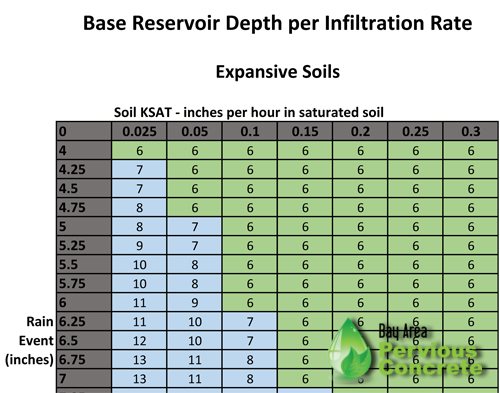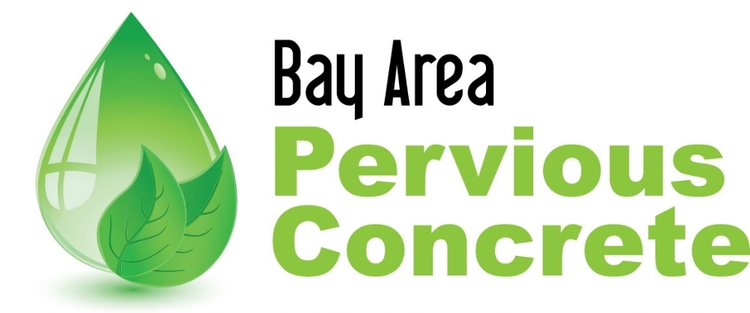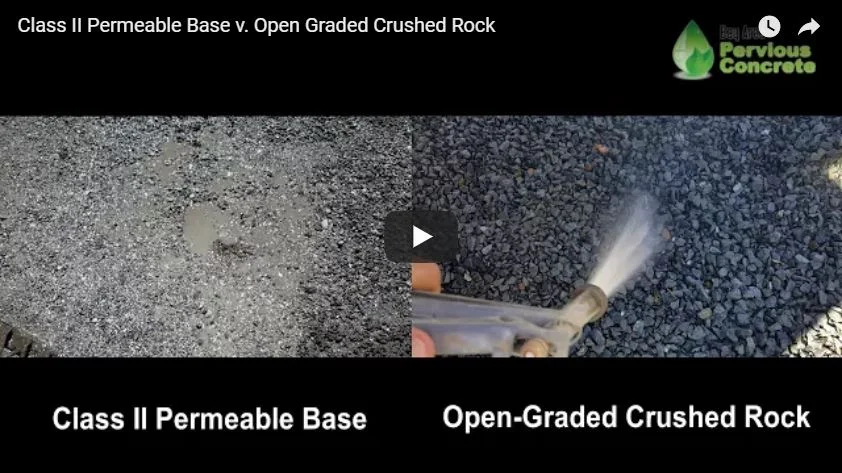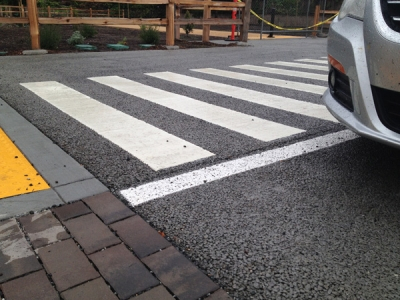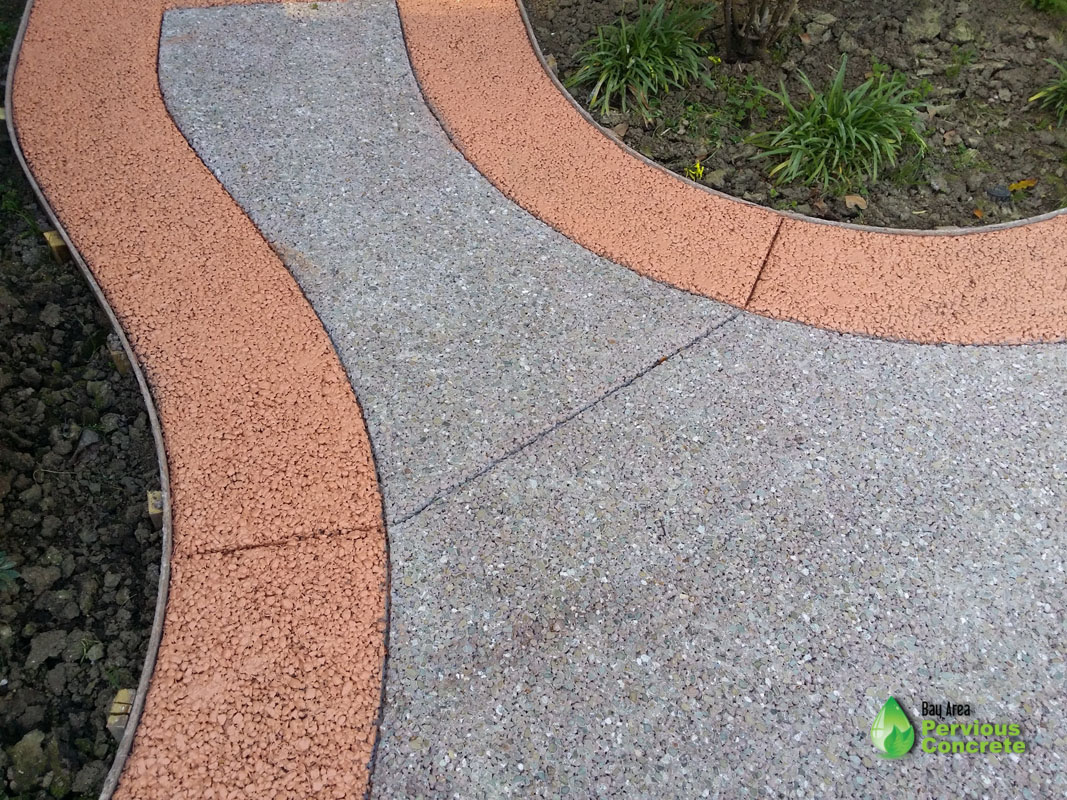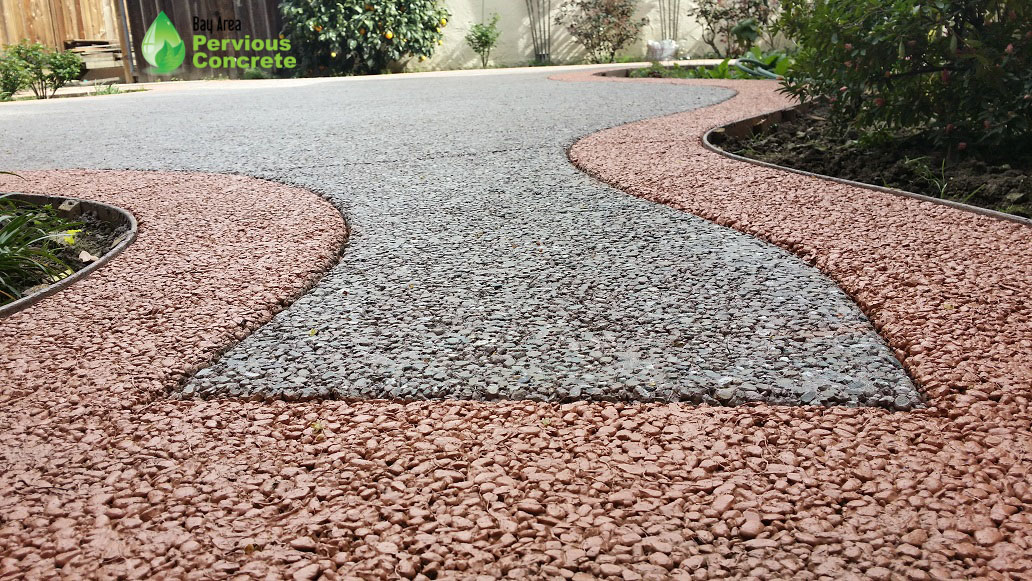Want to know how much base rock you need under your pervious concrete pavement? We've done all the calculations for you! Designed with low infiltration soils, like Class C & D, in mind these design tables allow you to quickly size the infiltration bed underneath your pervious concrete. Tables feature calculations for infiltration rates as low as 0.025 inches per hour!
Read MoreIt's April, so it's the perfect time for some spring cleaning! Time to clean out those dusty pervious concrete specifications and design details you have laying around, and replace them with something new and fresh. We have released new updates on all the favorites!
Visit our Resources Section and you can download the latest the industry has to offer
Specifications
Typical Design details
Performance Data Sheet
Read MoreThere has been some confusion as to what is the best base material to use for pervious concrete. Watch this video to see why you should specify open-graded crushed rock instead of "Class II Permeable Aggregate" as the base for pervious concrete sections.
Read MoreMost of the time in Northern California we enjoy fairly mild weather and sunshine, but it's not always sunny in the Golden State. The San Francisco bay area is known for its fog. This can provide some unique installation conditions, especially when you are installing pervious concrete on the top of the highest peak of the Santa Cruz Mountains, Mount Umunhum.
Read MoreWe have finally begun to install the pervious concrete on the San Francisco Public Utilities Commission (SFPUC) Holloway Green Street Project! The project involves eight blocks of new streetscape along Holloway Street. The green street improvements include both permeable pavement and rain gardens to manage stormwater through local infiltration. One of the reasons this is such an exciting project is it's the first use of pervious concrete in a public right-of-way in San Francisco.
Read MoreTo improve traffic flow at a busy intersection in Elk Grove, the City turned a four way intersection into a round-about. But it's not just any round-about, the new intersection also included features to enhance pedestrian safety and pleasure. Among those features is the new pervious concrete pedestrian and bike path that encircles the round-about. See more by watching the virtual fly-over video.
Read MoreWhat makes a good pervious concrete specification? This article explains how keeping your specifications up-to-date will allow you to promote good practices, have better performance, and protect you should there be any problems.
Read MoreHave you considered using pervious concrete on your project, then wished it came in a more appealing color or texture? At Bay Area Pervious Concrete it does! We have developed a wide array of finish options to choose from. Finish options can even be combined to create a truly customized look that will complement your chic, modern design, or something classic and timeless.
Read MoreAre you looking for a natural-looking, low-impact hardscape material? BAPC would like to introduce our latest new finish option - Portola™!
Our Portola Pervious Concrete™ provides a similar aesthetic to Decomposed Granite (DG), while providing the same durability, permeability and low-maintenance as the rest of our pervious concrete. All without the mess and maintenance challenges of DG.
Read MoreThere is a new pervious parking lot in Richmond, CA. Located at the new Harbourview Apartments this parking lot is 100% pervious concrete. Parking lots are the perfect application for pervious concrete. They epitomize the principal of the Large Area Thin Infiltration Systems (LATIS). Converting the pavement into a passive storm water detention system, that meets Provision C.3 Municipal regulations, without giving up valuable land to rain gardens, bioswales or detention ponds. By utilizing pervious concrete for the entire parking lot, this project was able to build more rentable units and achieve the most cost-effective solution, all while meeting Provision C.3 regulations.
Read MoreThe City of Pleasanton is trying to solve two issues they are having along their Arroyo Mocho Trail, flooding and maintenance costs. The project represents a testing site for the city to study and compare surface performance and maintenance costs of asphalt, decomposed granite and pervious concrete. Pervious concrete was specifically installed in an area that is prone to flooding. We, at BAPC, are pretty confident they will find similar results that other cities have when it comes to the high performance and low maintenance costs of pervious concrete.
Read MoreYou can never make another first impression. So why waste it? These homes in Portola Valley took full advantage of our Polished Pervious Concrete to cement a grand first impression upon all their visitors.
Read More
![Pervious Concrete Has Been Supporting Heavy Loads, Tire Abrasion and Freeze-Thaw Cycles for Years]()
Over the past few weeks we have seen the internet explode with interest over the recently announced Topmix Permeable concrete from Tarmac Lafarge in the UK. People are marveling over concrete that allows water to not only go through it, and back into the ground, but at an incredible rate. The video we featured on our last blog post is impressive and demonstrated just how fast. We were excited to see so much interest in pervious concrete by so many different people. However, we did notice some discrepancies in the way that pervious concrete was discussed in some of the media outlets, and we wanted to take some time to clarify a couple things.
Some of the media outlets portrayed pervious concrete as a new product that was not available in the United States - which is false. Pervious concrete has been used for stormwater management throughout the US for over 40 years. What's different, or innovative, about Tarmac's Topmix Permeable concrete is it boasts a whopping 35% air void space, which is why it infiltrates at such a high rate. Tarmac representatives have stated in interviews that the product has some limitations on where, and when, it should be used. They are not recommending Topmix Permeable for high-traffic areas, in places where vehicles make lots of tight turns, or in places with freeze-thaw cycles, as it will eventually start breaking up the surface layer. Some media corespondents have portrayed that all pervious concrete had these limitations - which is also false. While Topmix Permeable may have these limitations, more traditional pervious concrete does not share the same limitations. In the US, mix designs have evolved and have already solved the issues of heavy traffic, weight loads, turning vehicle traffic, and freeze/thaw cycles.
Through trial and error the pervious concrete industry has discovered that 20% air void space provides the proper balance between strength, durability, and high infiltration rates. The additional bonds provided by only having 20% air voids, allows for a stronger, longer-lasting material, with just as much infiltration capacity to mitigate all of a site's stormwater.
Read MoreThe internet has been calling this pervious concrete "Super permeable" and Magical." If you agree, you don't have to travel to the UK to see it or have it! Bay Area Pervious Concrete has been installing super pervious concrete management systems for nearly a decade. This viral video, from the UK firm Lafarge Tarmac, is a great representative of how fast pervious concrete can infiltrate water, but how does pervious concrete handle longer water events - like heavy rain storms? A real life test of pervious concrete. In our Stormwater Sleuthing video David compares two driveways after at least 12 hours of steady rainfall.
Read More
![Why Use Asphalt? In Morgan Hill They Use Pervious Concrete Curb to Curb]()
When most people think of road pavement, they think of asphalt. The new East Dunne Ave housing development in Morgan Hill, CA decided to do something different. They had Bay Area Pervious Concrete install pervious concrete from curb to curb for the new Seville Drive. Pervious concrete works great for roadways. Pervious concrete roadways have a lifespan of 30-50 years before it may need to be replaced. They are largely maintenance free for their entire lifespan. The extra benefit of pervious concrete is that it is a stormwater management system that doubles as a pavement.
Unlike pervious concrete roads, asphalt roadways have short lifespans, and require regular maintenance. Asphalt roads must be replaced, or resealed, every 10-15 years. This increases the maintenance necessary and inconvenience for residents. Typical asphalt roads also do not provide any stormwater management services. In fact they can actually contribute to poor stormwater management by concentrating pollutants that collect on the surface and rapidly shedding them into local waterways.
Read MoreLast week, in the heart of Half Moon Bay, CA the community was celebrating the re-grand opening of Mac Dutra Plaza. Curving throughout the plaza is Bay Area Pervious Concrete's signature Colored Polished Pervious Concrete. A combination of pervious concrete and pavers were used to aid in stormwater management for the plaza.
Read MoreRenovated Heart of Soquel Park in Santa Cruz, CA features colored pervious concrete in the plaza and parking lot, installed by Bay Area Pervious Concrete.
Read More